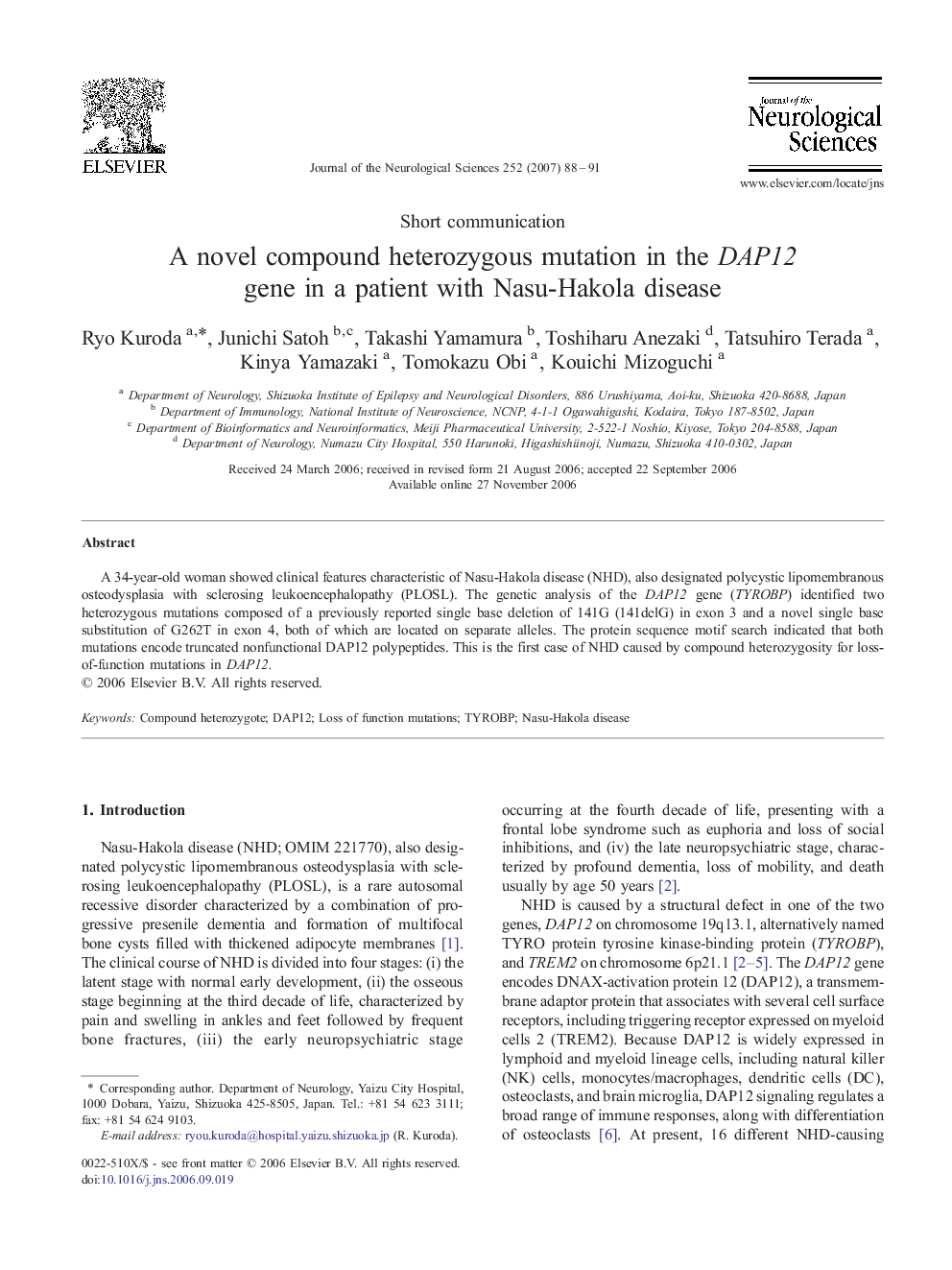| Article ID | Journal | Published Year | Pages | File Type |
|---|---|---|---|---|
| 1916542 | Journal of the Neurological Sciences | 2007 | 4 Pages |
Abstract
A 34-year-old woman showed clinical features characteristic of Nasu-Hakola disease (NHD), also designated polycystic lipomembranous osteodysplasia with sclerosing leukoencephalopathy (PLOSL). The genetic analysis of the DAP12 gene (TYROBP) identified two heterozygous mutations composed of a previously reported single base deletion of 141G (141delG) in exon 3 and a novel single base substitution of G262T in exon 4, both of which are located on separate alleles. The protein sequence motif search indicated that both mutations encode truncated nonfunctional DAP12 polypeptides. This is the first case of NHD caused by compound heterozygosity for loss-of-function mutations in DAP12.
Related Topics
Life Sciences
Biochemistry, Genetics and Molecular Biology
Ageing
Authors
Ryo Kuroda, Junichi Satoh, Takashi Yamamura, Toshiharu Anezaki, Tatsuhiro Terada, Kinya Yamazaki, Tomokazu Obi, Kouichi Mizoguchi,
